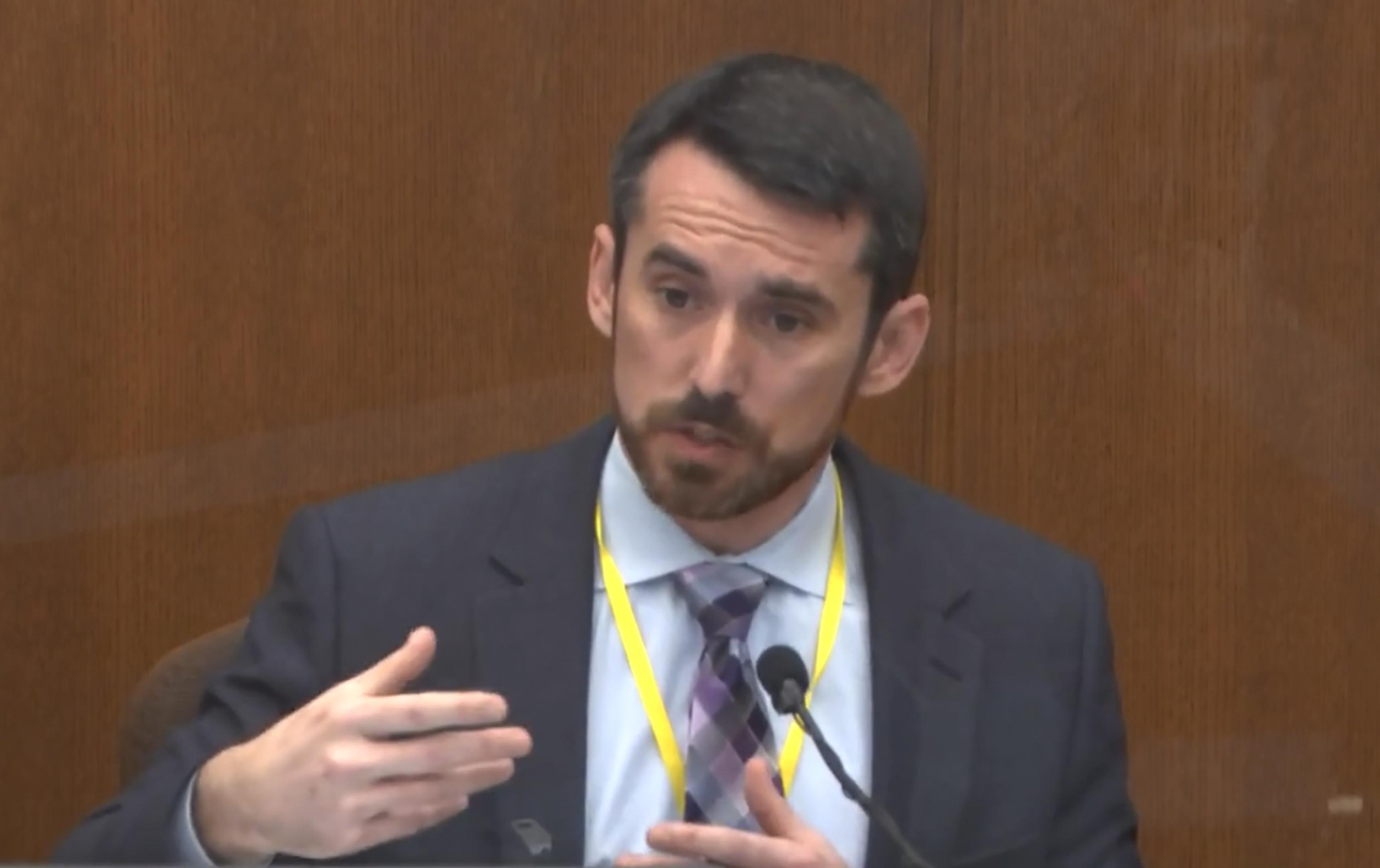
MINNEAPOLIS (AP) — The defense for a former Minneapolis police officer charged in George Floyd’s death was set to start presenting its case Tuesday, following 11 days of a prosecution narrative that combined wrenching video with clinical analysis by medical and use-of-force experts to condemn Derek Chauvin’s actions.
Prosecutors called their final witnesses Monday, leaving only some administrative matters before they were expected to rest Tuesday. Once the defense takes over, Chauvin attorney Eric Nelson is expected to have his own experts testify that it was Floyd’s drug use and bad heart, not Chauvin’s actions, that killed him.
The defense hasn’t said whether Chauvin will take the stand.
Prosecutors effectively wrapped up their case with George Floyd’s younger brother, alternately smiling and tearing up as he recalled Floyd, followed by another look at the harrowing video and testimony from a use-of-force expert who said Chauvin’s actions were clearly unreasonable.
Seth Stoughton, a professor at the University of South Carolina School of Law, judged Chauvin’s actions against what a reasonable police officer in the same situation would have done, and repeatedly found that Chauvin did not meet the test.
“No reasonable officer would have believed that that was an appropriate, acceptable or reasonable use of force,” Stoughton said of the way Floyd was held facedown with a knee across his neck for up to 9 minutes, 29 seconds.
He said, too, that the failure to roll Floyd over and render aid “as his increasing medical distress became obvious” was unreasonable.
He said it was unreasonable as well to think that Floyd might harm officers or escape after he had been handcuffed to the ground. And in yet another blow to Chauvin’s defense, Stoughton said a reasonable officer would not have viewed the yelling bystanders as a threat.
The matter of what is reasonable carries great weight: Police officers are allowed certain latitude to use deadly force when someone puts the officer or other people in danger. But legal experts say a key question for the jury will be whether Chauvin’s actions were reasonable in those specific circumstances.
On cross-examination, Nelson questioned Stoughton’s opinion that putting Floyd on his stomach in the first place was itself unreasonable and excessive.
“Reasonable minds can disagree, agreed?” Nelson asked.
“On this particular point, no,” the witness said.
Earlier Monday, Philonise Floyd, 39, took the witness stand and lovingly recalled how his older brother used to make the best banana mayonnaise sandwiches, how George drilled him in catching a football, and the way George used to mark his height on the wall as a boy because he wanted to grow taller.
He shed tears as he was shown a picture of his late mother and a young George, saying, “I miss both of them.”
His testimony at Chauvin’s murder trial was part of an effort by prosecutors to humanize George Floyd in front of the jury and make the 46-year-old Black man more than a crime statistic. Minnesota is a rarity in allowing “spark of life” testimony during the trial stage.
Philonise Floyd described growing up in a poor area of Houston with George and their other siblings.
He said Floyd played football and deliberately threw the ball at different angles so Philonise would have to practice diving for it. “I always thought my brother couldn’t throw. But he never intended to throw the ball to me,” he said, smiling.
Earlier Monday, Judge Peter Cahill rejected a defense request to immediately sequester the jury, the morning after the killing of a Black man during a traffic stop triggered unrest in a suburb just outside Minneapolis.
Chauvin’s attorney had argued that the jurors could be influenced by the prospect of what might happen as a result of their verdict.
But the judge said he will not sequester the jury until next Monday, when he expects closing arguments to begin. He also denied a defense request to question jurors about what they might have seen about Sunday’s police shooting of 20-year-old Daunte Wright in Brooklyn Center.
The Brooklyn Center police chief later called the shooting accidental, saying the officer who fired apparently meant to draw a Taser, not a handgun.
The remainder of this article is available in its entirety at CBN

